Stefan Wendin With Stratazon’s Justo Boero Delbanco and Henrik Johansson

Global Head of Business Design & Strategic Programs, Neo4j Innovation Lab
16 min read
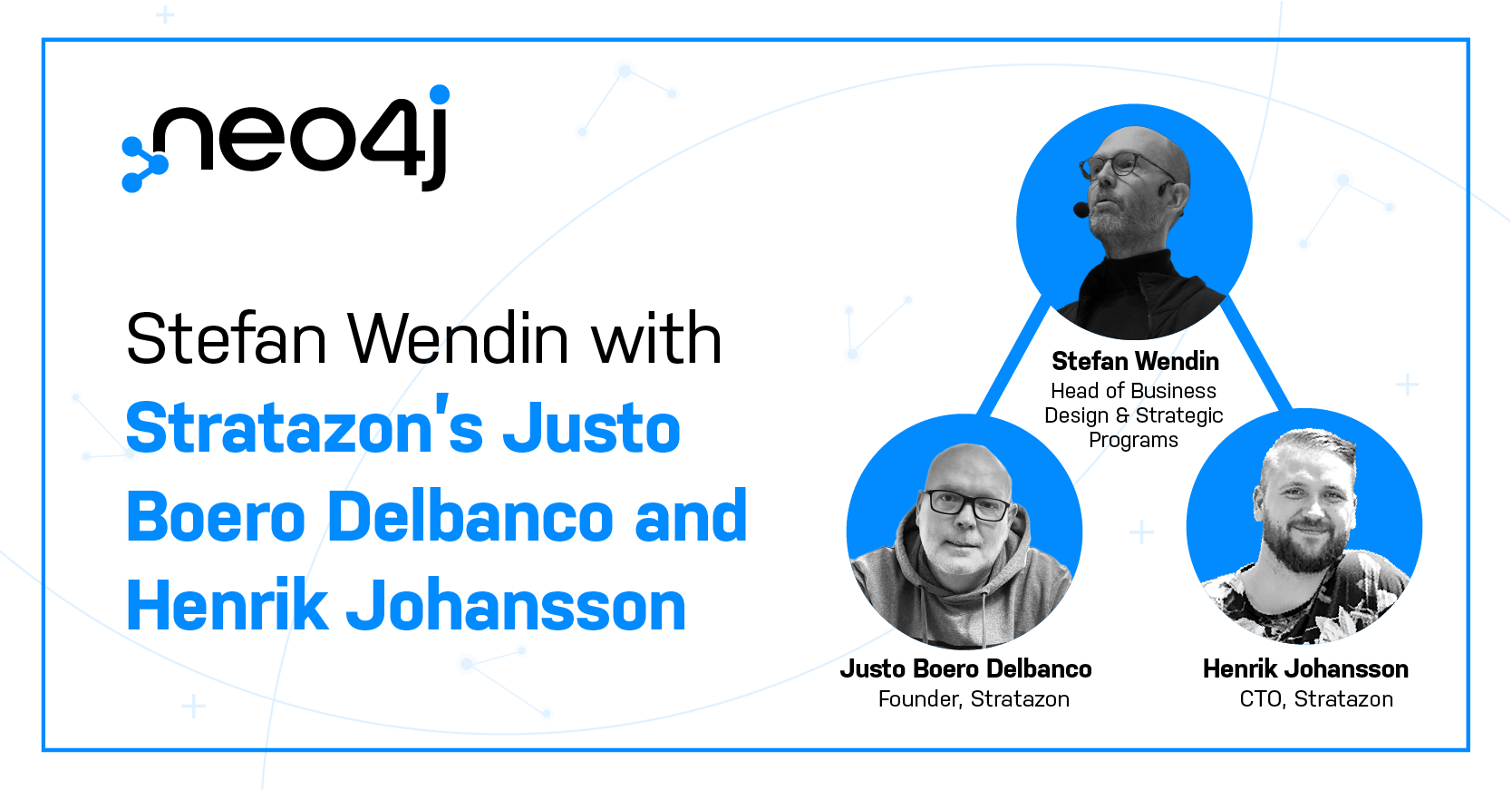
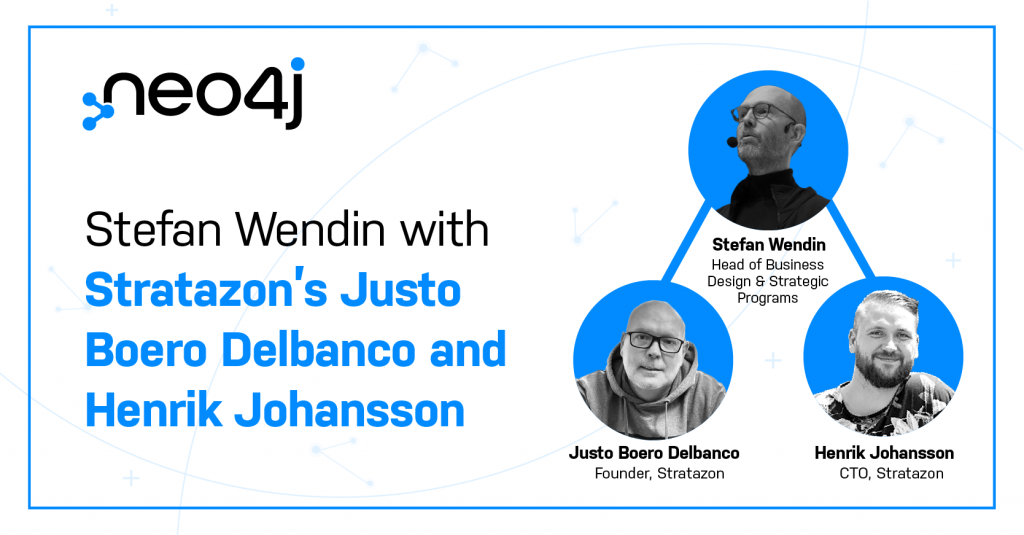
If you want to learn from experts in the graph space, you’ve come to the right place. The head of Neo4j’s Innovation Lab, Stefan Wendin, sat down with two executives at Stratazon, a Malmo-based international trade and development company that uses graph technology to develop valuable strategies and tactics for their clients.
CEO Justo Boero Delbanco and CTO Henrik Johansson share how Stratazon uses the power of connected data to gain real-time insights into the customer journey and help businesses thrive without friction. As stated on their website, “At Stratazon, it’s all about connecting dots that others have missed to find the real questions” – that sure resonates with us!
Check out their candid and comprehensive conversation to gain a deeper understanding of how graph technology is helping businesses reach their goals, as well as some of the challenges and revelations they’ve uncovered throughout their graph journey. Settle in and prepare to be enlightened.
Stefan Wendin: I’m sitting here with Justo [Boero Delbanco], who is the CEO and founder of Stratazon, a niche boutique firm in Malmo that’s working with Neo. Super nice to have you here. For the curious minds, in a short sentence or two, what is Stratazon actually?
Justo Boero Delbanco: Stratazon is a small consulting company that’s utilizing today’s technology regarding insights, and basically on a high level is complementing companies’ existing work, whether outside or tactically.
Stefan Wendin: Cool. Yeah. I like this idea of insights and tactics. Very often, I would say, coming from a strategic background, that insights are overly used and very often they aren’t really helping anyone actually act in a better way. Very often, it’s just a common PDF laying in a drawer, not stating anything. So one could maybe say that you are a little bit like one part McKinsey, and one part in the tech vein, combined into a task force to excel.
Justo Boero Delbanco: That’s a very, very good description of it. And I think that our aim and our ambition every time we talk to a client is not challenging their current strategies. It’s more trying to implement a new way of working to create insights. And I think that’s the big difference between rather having a daily operation that at the end of the week, month – whatever the wishes from the C-level and the management board are – weighs into their daily operations of collecting, analyzing, and creating insights for future decisions going forward, and getting an accurate picture of the environment that they’re practicing in.
Stefan Wendin: Yeah. Very, very interesting. So a little bit like a trajectory game, one could argue. One thing that I always talk to startups about – I care very little about the results you have, I’m more interested in the trajectory of your results, and if they are predictable. So I’ll close a five year plan, and then look at what is actually going on and where this takes us.
Reminds me of this saying I had, “Horsepower takes you to the finish line. However, the work will take you through the wall at the finish line.” And it reminds me a little bit like that. Maybe it’s the somewhat unglamorous part, but it’s the actual real part, right? A lot of people have this idea that the high priest of change management comes in, costs a lot, but do they really do anything of value? And I guess that’s up for another discussion, but I am really happy to see that you work on tactics as such.
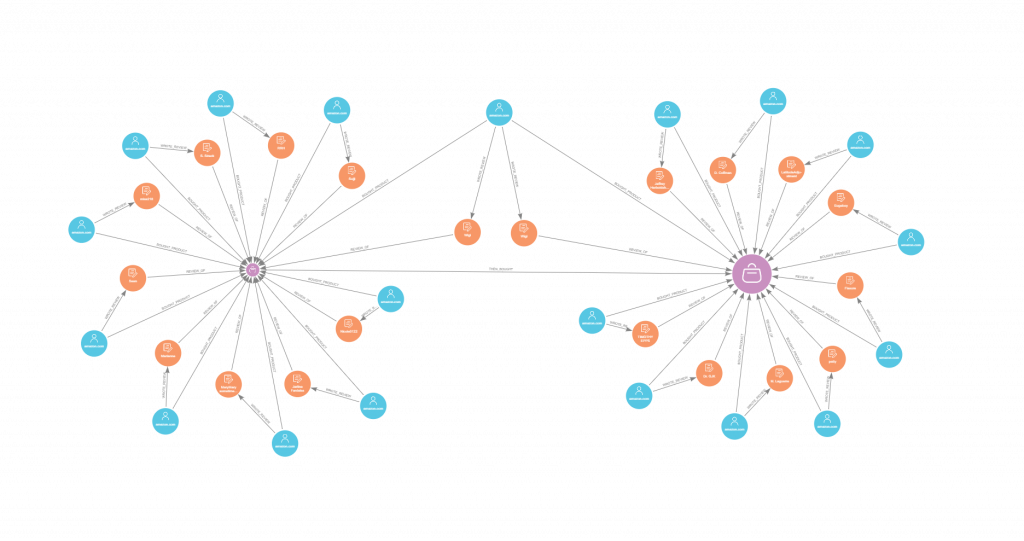
Justo Boero Delbanco: I think that’s our main issue of creating the tactics for the companies to understand – basically it gives us the leverage to use technology but almost in real time. And you will almost get down into daily operations, and giving the insights will be actionable, meaning that if they are actionable, every time they’re using the tactics, they’re getting one step further, getting closer, to their strategic goal. And I think that’s where you can create real value through the technology.
Stefan Wendin: Yeah, totally agree. So like part-time, almost changing the organ itself, it’s organized and the organism, if you may, and then using the latest technology and really looking into graph-based predictions and graph data science. So things are super good. It reminds me a little bit of, isn’t this what everybody says they’re doing, but they actually aren’t doing? So what would be unique in your approach, or is there any uniqueness?
Justo Boero Delbanco: Oh, that’s a good comment because everybody says they’re doing that. But then when you actually ask for specific examples of what they are doing and what they are creating, then that’s where it derails and it’s not really implemented into the organization. It’s usually consultancy companies like ourselves on the outside that deliver something that remains in the high C-level – and C-level doesn’t really share it all the way through the organization.
And when we try to work with the companies, we try to get it into the different functions. Reviews have been one of the things that we were doing very early in our beginning, looking at what insights can come from reviews. And those are, for a lot of people that have been online at least, considered almost like currency, right, an invisible hard currency for creating purchases.
Stefan Wendin: Now it’s very interesting this combination, and that brings to mind this old quote from one of the godfathers, one might say, of advertising – David Ogilvy – how consumers don’t think how they feel. They don’t say what they think, they don’t do what they say. So in this mishmash of this idea of self, how we believe that we are very rational human beings, obviously we’re not. I mean, anybody who stocked up on toilet paper during COVID could understand that, especially being in Sweden, a country full of things.
Justo Boero Delbanco: Which is hilarious because that requires that you would get food. Because it’s an easy combination of intake, outtake.
Stefan Wendin: Intake, outtakes. Super simple insight, yeah. Live insights. But I think this idea – and then also people go and say things on different media platforms, which is something that has literally exploded. And then there’s also what they actually do at the end. So it’s this combination, almost like a Venn diagram of, “I see reviews. I see purchase patterns. I see what they say that they actually didn’t like,” and there’s a sweet spot in there somewhere.
Justo Boero Delbanco: Yeah. I think that I’m not a very rational person myself. But there are a couple of things we like to share with our lines, like different channels, different purchase points. I’m the same guy, but I do have different behavior. I mean I behave differently. And I’ll give you a small short example just in regards to purchases that I’m the same guy. If I need a cable for my phone, I will most likely end up in an Apple store because I, a, want to get a good cable that I know works, b, I want to browse around their shop and see what’s the latest news and touch and feel everything.
However, I have two teenage kids – actually one teenager and one 18-year old. If they tell me that we need cables for the house for charging, for the phones and everything, I will most likely go to an online marketplace and buy a 10-pack of them. I’m still the same person. It’s just that I have a different purchase behavior depending on the context, the situation, and my needs. And that must be pretty challenging. I don’t think I’m that special.

Stefan Wendin: No, no, no. And I think we tapped into this in one episode of Between Two Nodes, where I talked to Dr. Marcus Collins about those cultural fits and cultural looseness. So I think there is also tremendous untapped opportunity doing this cross screening of behaviors, understanding that context is basically everything. And I also think this just relies or relates to a topic that I see as a mega trend, this idea of erosion of trust.
We see what happened in the Capitolium. We see the bot farms or troll factories as they called, how they can tip elections and a lot of these things. Also with COVID, a lot of people are going online and buying things. I would just guess that this will also tap into, “Can we trust brands online? Is this really a good product? Will it come in time?” Small, small things, it might seem, but we are getting used to buying things online and we all know what happens when the delivery person doesn’t come at the expected time or doesn’t call you.
Justo Boero Delbanco: I think a super interesting point of view is looking at that phenomena for a couple of years going back. If we turn back time and look at every company that wanted to be omni-channel or multichannel – there were a thousand names for this. And that was basically this – the strategy and the tactics.
It was just a matter of speedy implementation and everything. And I think that at the end, without any real thoughts or structure behind it, ended up with exactly what you’re saying – customer trust of, “Is this really transparent? Is there the fake side? Is it the real product?” A lot of those things are obviously coming together with a boom and sheer magnitude of online shopping throughout the crisis.
Stefan Wendin: Yeah. Actually going back, I just had this epiphany moment as you were speaking about the omni-channel, whatever we call it, period of time. Basically, take whatever X of crap and put it everywhere, just push it out, push it out. And this actually reminded me, I always tend to look upon the individual man and how we behave in a cultural context.
It reminded me of dating, weirdly enough. Everybody knows that if you have a copy/paste text that you sent, spamming to girls or boys or whatever your preferences are, you’re going to get caught, right? They’re going to go like, “This is a copy/paste message. What the fuck?” Oh, sorry. “What a beautiful flower?” You’re going to get caught, right?
And I think this is also what we learned from the customer brand point. If you just copy/paste your content and push it everywhere, it does not help me in the context that I am within. So this, “Should we be here? Should we not be here?” And instead see, “If we are here.” Be curious about how and what people are buying and so on. So are there any insights already that you can share, like a glimpse? You don’t have to tell all of the Stratazon secrets, but have you seen anything interesting?
Justo Boero Delbanco: What we see is the… I think what we identified pretty early is that we probably made a mistake ourselves of thinking in the lines of channel strategies. There weren’t really strategies because they are tactics. And the difference – whether it’s a channel, it’s a purchase point, it’s a community, it’s social media – the lack of really wanting to understand how that place works, what is the reason for being there? So I think that when a tactic is linked to a company’s product portfolio it is really taking the time and effort to really do it, rather than just going and trying to be everywhere.
I think a lot of companies have made it like that and they’ve been successful, but that’s more of creating hype. That isn’t long lasting. And a nasty thing that usually happens is that that hype circle, the time span of it becomes shorter and shorter and shorter. So in the end, you haven’t really created something that has any substance. So you will have to fuel that little fire of creating and maintaining your hype and hoping the end equation is going to show that we’re making some money.
Stefan Wendin: Yeah. That’s a very good insight right there. And I think a lot of people can actually benefit from this way of working and thinking.
Justo Boero Delbanco: I would like to push the reviews here – I think that’s been one of the things we’ve really enjoyed. I mean, it’s been hilariously fun reading through them. It’s tricky work. You have to try to go through the reviews, and if it’s a negative review, you have to start structuring and deciding whether it’s a purchase disappointment or the payment disappointment, or is it really related to the product? There are so many insights in terms of what people actually like or dislike about your product. So even to understand why people are liking the product so much – there are so many hidden treasures in that.
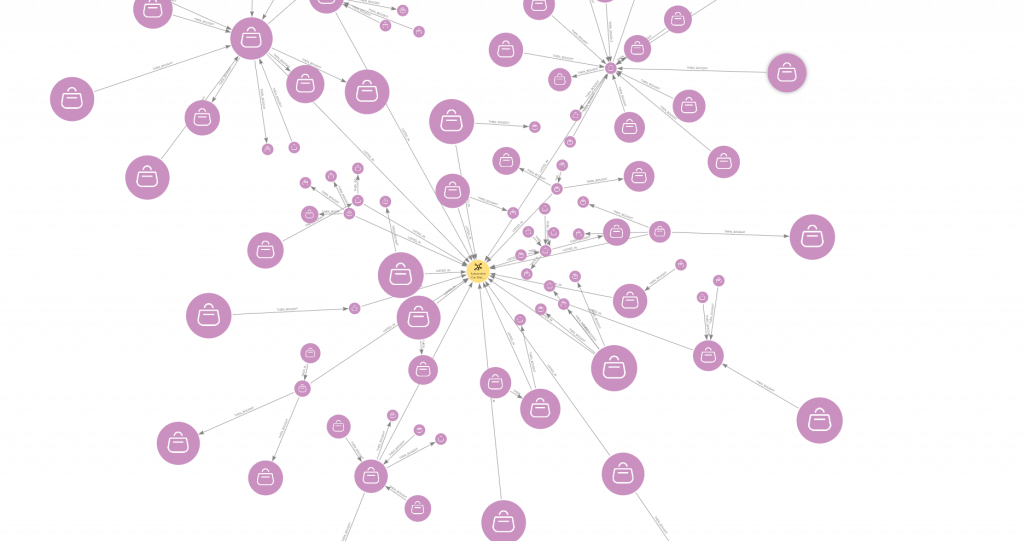
Stefan Wendin: Oh yeah. It’s untapped, I would think, because I also personally sometimes have this feeling when buying things online, at a marketplace or elsewhere. Very often the way I approach it is I Google various tests – like best product of the year. And then I start going into the reviews. Then I start looking at who wrote this review – is it a grumpy person? Did they write 10 more grumpy reviews before? Is this person only complaining? So I have to take that into consideration. So basically, that is my mind acting as your insight platform, one could almost say.
Justo Boero Delbanco: Yeah, but that’s where the technology kicks in. And I think that’s where we are lucky enough to partner up with Neo4j, where you can actually have a database of 600,000 reviews, apply natural language processing and get the positive, negative. And the technology supports that, which actually then makes going through 600,000 reviews almost a real time exercise.
Stefan Wendin: Yeah. It didn’t take that for me. It was very hard buying that fryer that I was supposed to buy – took me ages. I bought a very good one though, but it took me almost a day with some “Sorry, boss,” emails. “I’m sorry. I wasted working time.” Of course, I did it on private time, I’m just joking.
Nevertheless, one thing that came to mind, because we’re talking now about reviews, not as public domain or it’s open for everyone. You can’t touch it, right, which is the cool part. Or if you do, you’re going to get caught most likely, if you fiddle around too much with it. But I was just curious, because if I had a company, let’s say I’m shoe brand A and trying to implement the running shoe, I would be very curious to look at what shoe company B and C are doing. Is that question coming up? Is it an embarrassing question to ask how many seconds it is until it comes? A silly question.
Justo Boero Delbanco: It’s a matter of, it’s almost that you could have a closed envelope in the meeting. We know there’s going to be a given point where they’re going to say, “So really, if we wanted to look at a competitor and see why 300,000 people are liking their running shoe, could we? Yes, of course.” Of course, you can. So there’s a big difference there. And then it’s also a point of understanding and checking out why people are liking that product from a product development standpoint.
So either in the process of creating new products or services, you can get tremendous insight into actually understanding, because here is one of the things that is the most fun when looking at reviews. The company puts up what they believe are the most five-star reviews. However, it’s very rare that they are actually synchronized with the five star reviews. And people talk differently in different places.
Stefan Wendin: Cool. This sounds amazing. I would like to know more, maybe not from a technical standpoint, but also from a process way. How do you handle this? Because you said it’s a little bit in between here, both with technology, but also guiding people as they change. Technically, do you have any defined process about how you go about this?
Justo Boero Delbanco: Well, we’ve fine tuned that process over a period of time, and we actually now believe it’s a fun way of working and also quite efficient. Basically, if I run it really fast, it starts off by agreeing with the clients on a couple of initial workshops over a number of days, where the whole thing starts with a presentation of the company and they present their strategic vision to us.
Then we dive into, “What are the tactical challenges for you to reach that strategic goal?” Once we discuss tactical challenges with the management, we then try to prioritize them and say, “Which are the most critical ones we need to look at that needs to be solved today?” And after that, we actually do get to work.
And the insights that come out when there’s a proof of concept – when it actually solves the technical problems that the company has – we then implement the new way of working. And that’s where the new way of working comes in, where we actually have to go and implement that technology, so that for daily operations they do get insights that are the grounds for decision making.

Stefan Wendin: Cool. So one could say a structured way of doing transformation and innovation, basically.
Justo Boero Delbanco: Exactly.
Stefan Wendin: Yeah, so one could say that it’s basically very similar to the previous Innovation Lab sprint, but hyper-charged from a business perspective as well.
Justo Boero Delbanco: Yeah, it’s a business driven project and we’re looking at creating value for the business and reaching those strategic goals. And it’s been a great process.
Stefan Wendin: Cool. Thanks a lot, Justo and welcome Henrik [Johansson, CTO of Stratazon]. Nice to have you here.
Henrik Johansson: Thank you for having me.
Stefan Wendin: So we looked at the process from a business standpoint – how would this change the transformation for companies, how they could work tactically? I’m a little bit curious to dig in a bit more on the technical standpoint. So one could say that you have a process to capture and get data to create an initial graph, basically a knowledge graph, and then running real time analytics and recommendations based upon that. Is that a correct summary?
Henrik Johansson: Yeah, I would say it is, I would say it is. We have the process where we quickly can identify what data we need in the knowledge graph and very rapidly inject all of the data needed.
Stefan Wendin: Cool, cool. Very neat. And I think this combination to foster two outcomes – one, which is the business track, and one, which is the tech track or tech workflows – is a little bit of a struggle. That’s something I will work on throughout my entire career.
Henrik Johansson: Yeah, absolutely. Because normally you have the different silos of data and you have a lot of data outside of the company as well. And to be able to collect that into one database or one knowledge graph is critical in many cases.
Stefan Wendin: Yeah. I guess in the heritage of big data, everybody just collected more and more data, but the trouble with such behavior is that if you look upon it in isolation, you would very rarely see any good things. You will miss context. And I think this is the place where I see the graph shining through. So it is almost like the classic you can’t see the forest for all the trees.
Henrik Johansson: Absolutely. Absolutely.
Stefan Wendin: Cool. That’s very, very interesting. I would like to know if there’s some sort of highlight or example of this, since this is one of the transformative things, I guess, but my knowledge is that these are very secretive. So please don’t share any company names or anything, but maybe there is something that usually pops up?
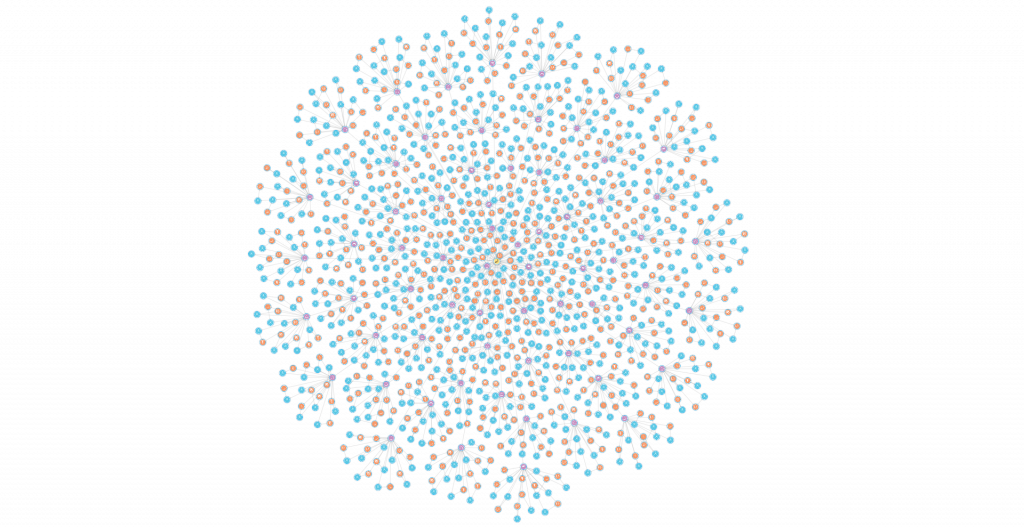
Henrik Johansson: Yeah, absolutely. A good example could be something we recently did where we constructed with the use of this structure that we have – we constructed a knowledge graph. And from that knowledge graph, we wanted to find out – not companies that normally know which their hero product is, but how clients get to the hero product and how the customer journey goes through a product portfolio. It’s normally not that easy to get a hold of.
So we made a huge knowledge graph based on reviews and customer transactions, where we could actually find which products were the initial step into the rest of the product portfolio. Because normally when you have the hero product, if it is, let’s say, consumables that are a regular purchase, we have seen that in many cases clients know their hero product is a very good product and they keep on rebuying it, but never expand into the remainder of the product portfolio.
And so figuring out why that is – could it actually be that they have started at one point in the product portfolio? So it’s really that general. It could be applicable for, I think, a huge amount of companies.
Stefan Wendin: Yeah. Anyone selling anything basically, and I guess that’s the foundation of a lot of modern economics. So it’s a story one could tell in most graph data science and understanding centralities, in that sense. So basically what you do is find a different path or what leads to what, so one could say what the trajectory products are, or something like that.
Henrik Johansson: Yeah, exactly. And I would say you could do the short version in the normal SQL database or any other database. But when it comes to these thousands of hops during a whole product portfolio, it gets unreasonable to do it because there are too many perspectives to take into the calculation when you go through that many products, over a long, long period of time and across probably millions of clients.
Stefan Wendin: Yeah. And I think also your example triggered something in my mind. It was this thing about how long it would take in any SQL structure or whatever to do these long complex things. And especially when we don’t really know what we are looking for. And since, as we hear Justo talking about very transformative stuff, are we looking for what we didn’t really know we were looking for, that we really wanted to find that was very valuable at the time? I can totally see also how this elaborate and fast approach would be helpful.
Henrik Johansson: Absolutely. And that’s why we start with the knowledge graph. We know somewhere around what the questions are that we want to ask, but building the knowledge graph and filling it up with not only the data we need for that question, but also other data like transactional history. But you can always put on, let’s say, reviews on top of that.
So when you find the trajectory or when you find the path of a client, you can actually go in and look at reviews to see what people think and what makes them take the next leap and what makes them maybe not take the next leap.








